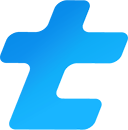How to make an email sequence
Structuring an email sequence can feel confusing. However, with the right practices in place and some examples, you can get rolling with one more quickly than you think! Whether you need a cold email sequence template or some sales email sequence examples, this post will help you.
What is an email sequence?
Put simply, an email sequence is a series of steps that revolve around sending emails to a contact. The steps in the sequence are not only sending emails, but they are the most important part of it. This is different from an email drip campaign, which is a series of emails that blast out to many contacts in a list. The drip email sequence is typically used in marketing and does not change or personalize content based on the recipient, but a cold email sequence is typically used for sales and is dynamic based on the recipient.
The point of a sequence is to make the outreach feel personal and customized. The goal is typically to put many contacts into a sequence and make them feel as if you are emailing them personally.
Email sequences will typically send an email, then wait a couple days, then send another if the contact did not reply or engage. Sometimes, there are other steps in the sequence, such as a prompt for the person sending the emails to reach out to the contact on LinkedIn or by text.
Examples of email sequences
There are a few different ways to engage a contact in an email sequence in order to get them to respond and interact (and potentially buy from you). A few examples that we’ll go over in this post are:
Cold sales email sequence
Post signup email sequence
Account upsell email sequence
These email sequences are aimed at making, keeping and expanding sales for your business. Let’s start with the first one.
Cold Sales Email Sequence
In another blog post of ours, we went over how to write a cold sales email and then wrote a sequel on how to follow up after it. However, for this blog post, we’ll take a step back and focus on the sequence those emails fit into.
Typically, you want to make sure your emails send around 10am (recipient’s local time) on a day they’re working. Since the goal is to get a response in order to book a call where you can sell or demo your product, you should also make sure to unenroll the contact from the sequence if they reply or book a meeting.
Finally, you should make sure that you use an omni-channel approach. Even though this post is focused on the email side of things, you should follow up via LinkedIn or phone, in the case that the contact responds better to either of those channels.
A typical sequence might take these steps:
Send initial email
wait 3 days
Send LinkedIn message
wait 5 days
Phone call
Send “I tried to call you” email
Wait 2 days
Send “Not the right time?“ email
Wait 7 days
Send final email
Post Signup Email Sequence
Unlike the sales email, this email sequence is for users who have already bought or signed up for your product. The goal of this sequence is to drive usage and adoption of your product. The emails in this sequence should be focused on the business value that your product’s features offer. Specifically, if possible, they should highlight features that the user is not currently using.
Emails from this sequence can be sent anytime, since you’re not optimizing for a response, though you should pay attention to when you send the emails. HubSpot’s research on email send timing suggests sending Monday or Tuesday between 9am and 12pm.
For this campaign, an omni-channel approach also works very well. However, unlike the sales sequence, your other channel should be an in-app notification or chat.
Here’s an example structure for this sequence:
Send “Welcome to our Product” email
wait 3 days
Send “Getting set up” email with resources of features they haven’t used/seen
wait 1-2 weeks (depending on their usage)
Send “You’re a pro” email or “How to boost your number” email with resources
wait until 1 week before trial expires
Send “Make sure you don’t lose access” email
Account Upsell Email Sequence
Unlike the other 2 sequences, this sequence is a little more difficult to automate enrollment. You might enroll a contact in this sequence when they have good value from your product, but would find more success by adding more users or upgrading their account.
Since you already have them as a customer, this sequence should be highly tailored in order to make the customer feel seen and heard. Like the sales email, you should unenroll the contact if they respond or take a meeting or if they upgrade their account on their own.
Here’s an example structure:
Send “Your annual summary” email to show the value of the product. Include a mention of a couple upsell features in here.
Wait 2 days
Send “Have you considered X feature?” email. Where “X” is a feature in a more expensive plan. Ideally, this is specifically tailored to the user to provide more value from your product
Wait 5 days
Send “For you: Y% off your upgrade to the Pro plan” email. It’s important that this email is customized to tell them why you think they would see value from the next plan up, otherwise, you’re just sending any old sales email without hearing their needs.
That’s it! We hope this post is helpful in structuring your email sequences and growing your business.
